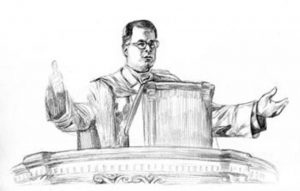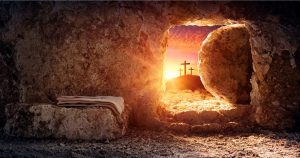
Mark 13:1-13
¹As He was going out of the temple, one of His disciples said to Him, “Teacher, behold what wonderful stones and what wonderful buildings!”
²And Jesus said to him, “Do you see these great buildings? Not one stone will be left upon another which will not be torn down.”
³As He was sitting on the Mount of Olives opposite the temple, Peter and James and John and Andrew were questioning Him privately,
⁴ “Tell us, when will these things be, and what will be the sign when all these things are going to be fulfilled?”
⁵And Jesus began to say to them, “See to it that no one misleads you. ⁶Many will come in My name, saying, ‘I am He!’ and will mislead many.
⁷When you hear of wars and rumors of wars, do not be frightened; those things must take place; but that is not yet the end. ⁸For nation will rise up against nation, and kingdom against kingdom;
there will be earthquakes in various places;
there will also be famines.
These things are merely the beginning of birth pangs.
⁹But be on your guard; for they will deliver you to the courts, and you will be flogged in the synagogues, and you will stand before governors and kings for My sake, as a testimony to them.
¹⁰The gospel must first be preached to all the nations.
¹¹When they arrest you and hand you over, do not worry beforehand about what you are to say, but say whatever is given you in that hour; for it is not you who speak, but it is the Holy Spirit.
¹²Brother will betray brother to death, and a father his child; and children will rise up against parents and have them put to death. ¹³You will be hated by all because of My name, but the one who endures to the end, he will be saved.
Devotional
It starts with a casual remark when they leave the beautiful, large temple buildings.
To win over the Jews King Herod the Great, who came from Edom (He reigned from 37-4 BC) began in 20 BC to tear down the temple, which had been rebuilt after the Babylonian captivity, and then rebuild it again (This work was completed in 64 AD). No expense was spared to make it a unique complex.
Therefore the spontaneous words of the disciples in verse 1 is not strange.
Jesus gives a response to it (Mark 13:2). He envisions that God will allow the temple of Herod to be destroyed exactly in the same way as the temple of Solomon in 586 BC. (1 Kings 9:6-9; 2 Chronicles 36:19), namely a complete destruction (this happened in 70 AD).
When He then rests with four of His disciples a little later on the slope of the Mount of Olives, He returns to it in detail. The questions about the future are now burning on the disciples’ lips (Mark 13:3,4).
The question about ‘when’ is understandable, but Jesus Himself does not even know exactly (Mark 13:32). Even when his disciples just before his ascension ask Him again. He simply points them to their responsibility to God and their fellow man — to testify of Him full of the Spirit (Acts 1:6-8).
Jesus, on the other hand, does elaborate on the question of his return as King of God’s Kingdom over all the earth (Compare Matthew 24:3).
He paints widely the signs of the end times. This is the time between his ascension and His return to earth.
Three phases can be distinguished:
▪︎ the ‘beginning of labor pains’ (Mark 13:5-8),
▪︎ the ‘opening up pangs’ (Mark 13:9-13),
▪︎ the ‘pains of the actual birth’ (Mark 13:14-23).
Only then will the Lord come back completely unexpected, by surprise (Mark 13:24-27).
The birth of the “New Age” (Matthew 19:28) will require much suffering and energy, requiring great and sustained sacrifices for many, many centuries.
All peoples, tribes, nations and language groups will receive their right to the Gospel first (Mark 13:10; Compare Revelation 5: 9,10). It is our reliable thermometer of the end times.
Who did not yet receive this right? Where was the Gospel not yet preached?
Question:
▪︎ What parallel is there between Mark 13:9-13 and Hebrews 10:32-39?
Prayer suggestion
▪︎ Pray for an active share on your part in Jesus’ return.
Twitter: @SchoemakerHarry
Website 1: https://devotionals.harryschoemaker.nl
Website 2: http://bijbelplaatjes.nl





